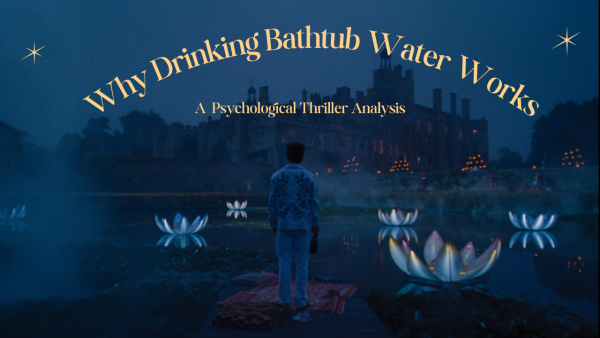The origins of the werewolf

FILE – This July 24, 2006 file photo shows a gray wolf at the Wildlife Science Center in Forest Lake, Minn. An appeals court ruled Friday, March 3, 2017, to lift federal protections for gray wolves in Wyoming. The ruling by the U.S. Court of Appeals for the District of Columbia reverses a lower judge who sided with environmental groups and rejected Wyoming’s wolf management plan. (AP Photo/Dawn Villella, file)
The legends of the werewolf are both popular and far reaching, spanning several different cultures and regions. Naturally, with such a long and storied history, various peoples have altered the idea of the werewolf in order to fit their customs and give it a place in their legends. However, regardless of the changes, many tales involving werewolves do agree on many aspects of the creature, such as the transformation being a curse and the fact it can only happen during the full moon.
In almost every modern story, the curse of the werewolf, or lycanthropy, is simply that, a curse. It does not mean any more, nor does it affect the personality of the victim. In many contemporary takes on the werewolf, the victim has no control over what they do and must give themselves over to the bloodlust brought on by their curse. Another similarity that stories share is the beast’s weakness to silver, which often times burns its skin as if it were a brand. However, how much of these popular aspects are actually part of the original legends? Did the werewolf really have a weakness to silver, or was it even a curse?
Similar to many European monsters, the werewolf can trace its origins back to ancient Rome. While the first stories involving men turning into wolves originates as early as ancient Greece, it isn’t until Rome that the concrete legends of werewolves become known. An old Roman tale written by Greek author and traveler, Pausanias, tells of how King Lycaean of Arcadia attempted to test Jupiter’s clairvoyance by killing and serving the god his own son, the prince. Furious with the brazen cruelty, Jupiter casts a curse on Lycaean, turning him and his surviving sons into wolves.
“With respect to the Parrhasian pugilist from Arcadia, whose name is Demarchus, all that is related of him, except his Olympic victory, I consider as the fictions of arrogant men; such as, for instance, that in a sacrifice to Lycaean Jupiter he changed himself into a wolf, and in the tenth year after this recovered again his pristine form.”
From this story as well comes the birth of the word “lycanthrope,” being derived from the name “Lycaean” and the Greek story of Lycaon. However, unlike other Greek stories involving transformations where the metamorphosis destroys the person’s mind, Lycaon retains his sanity. Following the transformation, Jupiter remarks that “he is still Lycaon.” The survival of personality even through the changing process is a similarity shared in many modern werewolf tales.
During this period of time, many other pieces of werewolf lore are also introduced, such as the removal clothing prior to transformations, their associations with cemeteries, as well as their monstrous nature. Roman authors such as Ovid, Livy, and Virgil further popularize the creature in their works.
In a poem written by Virgil, he describes a man’s shifting into a wolf by ingesting certain herbs, not through a curse of any sort.
“These herbs and these poisons, culled in Pontus, Moeris himself gave me – they grow plenteously in Pontus. By their aid 29 I have oft seen Moeris turn wolf and hide in the woods.”
More familiar cases of the werewolf appear in a story by Roman author Petronius. In which, a slave by the name of Niceros is travelling by night to visit a lover. For safety, he embarks in the company of a friend, who during their journey, finds his way into a graveyard. Observing his friend there, Niceros watches as he disrobes and shifts into the form of a wolf. Naturally, Niceros flees soon after witnessing this.
Following the fall of the Roman Empire and the birth of the medieval era, several more scholars and authors modified the werewolf. During this time, monsters, such as vampires or trolls, were seen as demons or people who consorted with the Devil, such as witches. In this sense, the werewolf was no different. Legends surrounding werewolves were generally negative, portraying them as vicious and violent. In a poem written by French author, Marie de France, she describes a type of werewolf, known as “Bisclavret.”
“Bisclavret”‘s the name; “Garwolf” in Norman means the same. Long ago you heard the tale told– And it used to happen, in days of old– Quite a few men became garwolves, And set up housekeeping in the woods. A garwolf is a savage beast, While the fury’s on it, at least: Eats men, wreaks evil, does no good, Living and roaming in the deep wood.”
People’s fascination with the supernatural did not end with the fall of Rome. Various encyclopedias on monsters and spirits, called as bestiaries, were still being drafted well into the late medieval era. Much of these manuscripts were written by clergy, members of the church who sought to explain miracles from God, or the evil workings of the Devil. More often than not, the element of horror was lost in exchange for a more hopeful narrative.
It is at this time that the werewolf begins to become a more sympathetic creature. Unlike the modern portrayal of werewolves as having vaguely human features, such as walking upright or having a simian face, medieval werewolves were depicted as looking exactly like the animal. The only thing to betray their human nature was their personality, which was locked within the wolf body.
This was the case presented by Gerald of Wales in his Irish story Werewolves of Ossory. The legend of the werewolf was particularly popular in Ireland, where the culture shared many similarities with that of Norway. In Norse legends, it was believed that particularly ravenous warriors would be cursed and transform into beasts. In the Irish story, an unnamed priest is confronted by two wolves who claim to have once been human.
“My wife and I were chosen to take the wolf-shape over six years ago. We were old and it was assumed that the clan could do without us, and so we were driven out from among our people under the curse. Our time in wolf-shape had almost passed when some hunters, passing through these woodlands, aimed an arrow which struck my wife, grievously wounding her. Father, I fear that she is not long for this world and I would implore you to give her the final absolution before she dies.”
However, the idea of a sympathetic werewolf was not popular everywhere. At the time, much of Europe did not have a very popular view of wolves. They were seen as scavengers, thieves, and killers. When the word “werewolf” was first coined in the early medieval period, it was used to describe a rebel or an insurgent. Though it was an uncommon insult, it was most often seen in clerical texts to discredit rioting groups.
In 1500s France, the concept of the werewolf gained a much more infamous reputation. Similar to the Witch Trials of Salem Massachusetts, the Werewolf Trials of France claimed that the accused had forsworn God and made pacts with Hell. At this time, the werewolf became much more bloodthirsty, akin to the beast that we know it as today. Many people accused of being a wolf were also accused of slaughtering virgin women, eating children, and drinking blood. Ironically, it was considered that werewolves and vampires were almost the same creature. During the trials, many people were tortured and forced to admit to their crimes. For example, a German man named Stubble Peeter confessed to being a werewolf.
[He] had murdered thirteen young children, and two goodly young women big with child, tearing the children out of their wombs, [……] he used many times to kill lambs and kids such like beasts, [……], as if he had been a natural wolf indeed [……]
Peeter was specifically portrayed as sharing more similarities with Lycaon than that of the cursed humans presented by Gerald of Wales. Like King Lycaon, Peeter was said to have enjoyed cruelty, a had a particular distain toward God, as well as a hunger for human flesh.
Following these cases and moving into the classical era, the idea of men turning into wolves began to lose a level of believability. Here, they began to become more fictional legends rather than historical fact. The concept of transformations in the classical period was used as a metaphor for mental illness, in a similar fashion to Robert Louis Stevenson’s Dr. Jekyll and Mr. Hyde.
With the werewolf becoming a well-known fictional character, many authors began changing and adding to the mythology. Novels such as Harry Potter and Twilight, or TV shows like Buffy the Vampire Slayer all take ideas from the werewolf’s past but few tend to deviate much from each other. Though the creature’s physical appearance was indistinguishable from an actual wolf, this could not survive into the modern age. The reason being that movies had a hard time getting a wolf to cooperate and thus had to make the werewolf appear more humanoid.
With origins reaching as far back as the Roman Empire, and with contemporary adaptation to boot, the werewolf is certainly one of the most influential myths of the western world.
Sources for information and quotes:
https://etd.ohiolink.edu/rws_etd/document/get/kent1222706628/inline
http://users.clas.ufl.edu/jshoaf/marie/bisclavret.pdf
http://www.irelandseye.com/aarticles/culture/talk/banshees/werewolf2.shtm
https://www2.warwick.ac.uk/fac/arts/ren/news_and_events/researchblog/werewolf/











